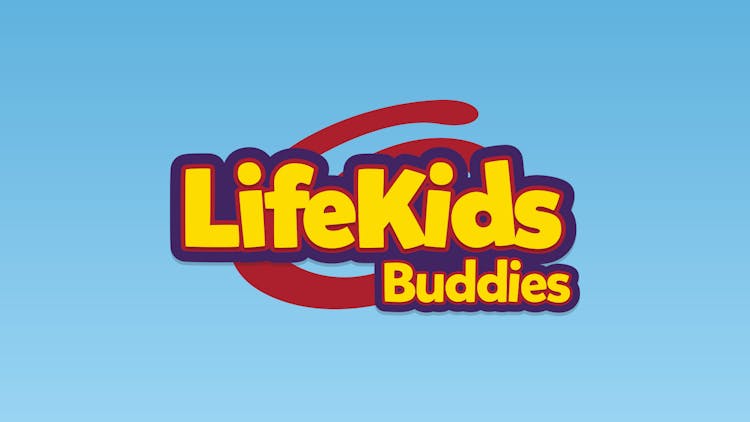Are you ready to find out what Story Time is all about? Hint—it’s more than just reading a story! Parents will see their little kiddos building relationships and having fun with you when they come to check them out. Watch the video below and read on for some helpful tips and tricks for your Story Time and Pick-Up procedures.
Watch This
Here’s your chance to watch Story Time in Action. Watch small groups separate to participate in Story Time with their individual leaders, and learn door skills you’ll need when parents come to pick up and check-out their kids. Kids ages 2 through Kindergarten are included, so no matter which Early Childhood room you serve in, there’s something for you in this video!
As you watch, use the Small Group Leader Guide and set of Story Cards for ages 4-K to follow along with the lesson. (If you would like to view the leader guides for ages 2-3, use this Small Group Leader Guide and set of Story Cards.)
Want more Story Time tips and tricks? Check out Ending Strong with Story Time.
Read These Tips
- Lead small. Story Time is the most important part of the hour! Here’s why.
- Kids feel known. Make sure your kids know your name, and they know yours. Knowing names is a sign of a deeper friendship with a kid. It means a lot to them, and to their parents, when they can refer to you by name instead of calling you by a title like “Ms. Teacher” or “Mr. Leader.”
- Kids can talk. It may take the whole hour for a kid to be comfortable enough to say things like, “My Gi-Gi broke her leg, and I’m sad she can’t go on walks with me now,” or, “My Mommy and Daddy don’t live together anymore,” or, “My doggy ran away and we can’t find her anywhere!” Don’t shut it down. Encourage discussion. Kids want to talk with you because they trust you.
- Lesson review is secondary. Story Time is a fantastic time to follow the Small Group Leader Guide and review what kids have learned, but more importantly it’s a chance to reinforce the friendships you’re building with each kid. A kid with good, loving relationships at church is more likely to trust they can have a good, loving relationship with God.
- Use your leader guide. Everything you need to lead Story Time well is listed on your Small Group Leader Guide. It’s a lot of information, but each section will help you lead successfully!
- Purple Box: What to Do First. This section helps you get started and moves you from introductions to reading the Story Cards to a review game that changes weekly.
- Blue Box: Say With Me & Actions (2 to 3-year-olds) or Review Questions & Actions (4-year-olds to Kindergarten). These sections offer ways to interact with each Story Card as you read them. It helps kids focus on each Story Card’s meaning and reinforces it with movement.
- Orange Box: How to Wrap Up. This is another opportunity to build friendship with your kids. It includes an open-ended personal question and reminds you to pray for each other before you move on.
- Green Box: Adventure Book. If you don’t have to man the door for pick-up and check-out, don’t move on to the Adventure Book and check-out procedures. Adventure Books are not a part of Story Time. They’re a tool to partner with parents so they know what their child has learned and to keep one small group busy while their leader runs check-out.
- Get acquainted ahead of time. Visit leaders.life.church during the week to read over your Small Group Leader Guide and accompanying Story Cards.
- Remember. The Small Group Leader Guide is just a guide—if kids need to talk through things, don’t feel rushed and obligated to finish everything on the page before their parents return.
- Pick-Up time. Not every leader is at the door for Pick-Up, but every leader can help it run well!
- Door skills:
- Greet each parent who comes to your door with a genuine smile and positive attitude.
- Keep it more personal by memorizing which parents match each kid so you don’t have to ask who they need to check-out.
- Call gently for each kid, walking to their small group to retrieve them if necessary. Avoid yelling out or barking names severely.
- Say something positive and specific about each child to their parents, and tell them their kid’s small group leader’s name. Example: “Tyler and I had a great chat about how he’s going to clean up his Legos this week! He did a great job in Mr. Jay’s small group today!”
- If a kid had a rough day, don’t use Pick-Up to hash it out. Ask your LifeKids staff member for the best strategy to partner with parents to resolve difficult behaviors.
- Always double and triple-check each kid’s name tag with their parent’s check-out code.
- Small group support:
- Send kids to the door as quickly as possible when you hear their name.
- Keep an eye on the door leader’s small group so they don’t have to leave pick-up duty.
- Door skills:
- Learn more. Check out the Ending Strong with Story Time video and discussion guide.
Think About This
Use every second of Story Time to get to know the kids in your small group, then reinforce what you’ve learned together. You can train student leaders to be fantastic at leading a small group every week. They can become precious mentors to the children in your room, too!
Talk It Over
Now that you’ve read a few tips and watched a video, help the info stick! Talk over these questions with your Coach or a LifeKids staff member. Share what you’ve learned with other leaders in your room!
- Have you ever been tempted to shorten Story Time to let your kids color Adventure Books instead? What would have helped you to keep kids focused on Story Time, instead?
- Which part of the Small Group Leader Guide helps you the most? Which parts do you have questions about?
- Share something sad or exciting a kid told you during small group Story Time. How can you be an encouraging, helpful resource to that child and their family through their ups and downs?


